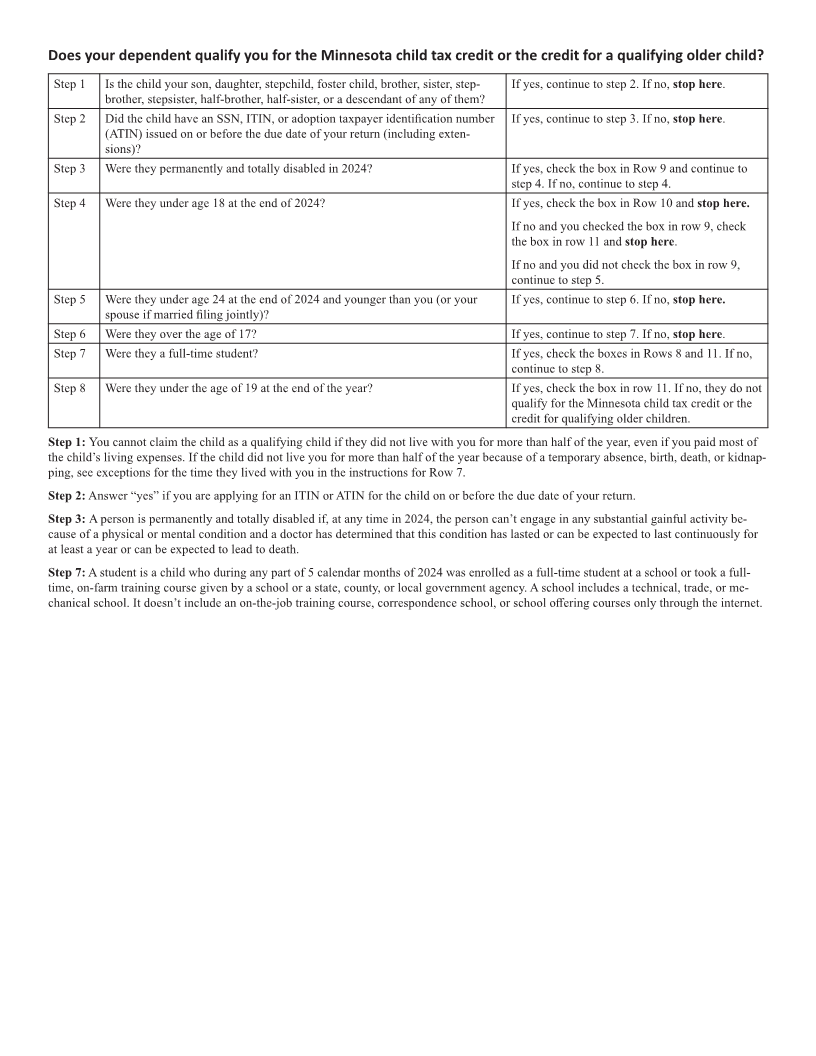
Enlarge image
NEAR FINAL DRAFT 8/1/24
*241601*
2024 Schedule M1DQC, Dependents and Qualifying Children
Use this schedule to provide information about your dependents and qualifying children. If you need to list more than three, provide a separate
statement with the additional dependents and qualifying children.
Your First Name and Initial Last Name Social Security Number
A — Child 1 B — Child 2 C — Child 3
First name and middle initial ................... a1 b1 c1
Last name ................................. a2 b2 c2
Social Security Number or Individual Taxpayer
Identification Number .......................... a3 b3 c3
Date of Birth .................................. a4 b4 c4
Relationship to you ............................ a5 b5 c5
Check the box if you are
claiming them as a dependent ................ a6 b6 c6
Number of months they lived with you .......... a7 b7 c7
Check the box if they were over age
17 but under age 24 and a full-time student ..... a8 b8 c8
Check the box if they were permanently
and totally disabled in any part of 2024 ........a9 b9 c9
Check the box if they are a qualifying child ..... a10 b10 c10
Check the box if they are a qualifying older child a11 b11 c11
9995

